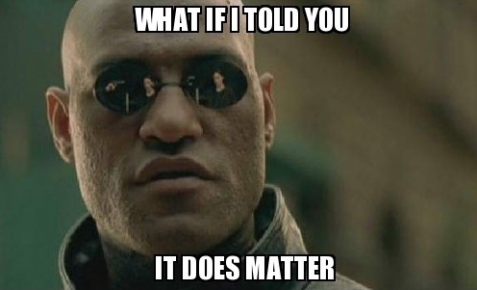The Anatomy of a Great Job Description

Are your job postings attracting the right type of applicants to your company? If not, now is the time to transform your job postings in a way that really grabs the best candidates’ attention.
Think about it. Your job posting is often the first line of communication your organization has with prospective candidates. What kind of first impression are you making?
For decades, all job postings looked pretty much the same : a job title and a list of the most important skills and experience required for the position. Today, however, these standard job postings are not enough to attract top talent. Candidates have access to literally thousands of vacancies, so your posting needs to stand out.
The goal of any job posting is to entice top candidates to take an interest. In a sense, the job of a recruiter is quite similar to that of a marketer. Just like your organization’s ads are designed to entice consumers to buy your product, your job posting should pique the interests of candidates to apply.
So, what should a great job posting look like?
Relevant and Short Job Title
First impressions do make a difference. In fact, how prospective candidates view your job announcement from the very beginning makes a big difference. According to a Mediative study, most people scan webpages vertically instead of horizontally. This makes it especially important that you craft a job title that gains attention. Here are some tips for doing just that:
– Keywords Come First : You should place the most relevant words near the beginning of your job title. In fact, these words should make up the first 1-3 words of the job title to ensure they get noticed when the job seeker is scanning through job postings.
– Location Not Needed: Since most online job boards effectively sort by location, there is no real need to make this a part of your job title. This redundancy will just waste valuable space you could instead use to promote your opening.
– Short and Sweet : Job titles do not need to be long to get noticed. Think about it from the candidate’s point of view. They are searching through dozens or hundreds of openings, and they just don’t have the time to read through long job titles. Glassdoor Senior Director of Engineering Bhawna Singh suggests keeping your job title between 12-20 characters. Think short and simple, such as “Project Manager” (15 characters) or “Financial Analyst” (17 characters).
Job Brief and Requirements
A job description should give a clear idea of what the job involves, explain what the candidate will do on a daily basis, and outline the skills needed to succeed at the job.
Here’s a good example of an Adobe job post structured in three main sections:
- “The Challenge” (job description)
- “What You’ll Do” (list of specific job duties)
- “What You Need to Succeed” (list of requirements)
Along with the educational and experience requirements, the post also includes specific skills – such as presentation, management, and collaboration – to make sure that only the right kinds of candidates apply.
When creating a job posting, don’t just focus on education and experience. You should also include soft skills, such as personality traits and interpersonal skills.
Why the Position Matters

Today’s candidates don’t just want to know what the job duties are. They want to know what it’s like having a role in your company and how the role matters in the grand scheme of things.
Share what it’s like to work for your company. Give job seekers an idea not only of the position itself, but also of the impact this position will make within your company.
A Glimpse of the Workplace Culture
Microsoft decided to trade in standard job postings for this unique model:

This advertisement not only grabs candidates’ attention, but it also highlights Microsoft’s culture as a fun and innovative workplace. (And it doesn’t hurt to make sure that software developer applicants can handle basic mathematical calculations.)
Inserting your company’s culture into your job posting is crucial, especially now that millennials make up a significant portion of the workforce. Brennan White, cofounder and CEO of marketing analytics company Cortex, says it best : “Assuming you’re targeting millennials, you need to give the reader a genuine sense of your culture. Culture is paramount to the younger generation.”
The Benefits of Working With You
Ride-sharing app Lyft has created several great job ads that are designed to grab candidates’ attention, with headlines such as “Nine to Five. Become a Lyft Driver,” “Be Your Own Boss. Drive with Lyft,” and “Make up to $1,500/week with Lyft. ”
These headlines are followed by a short statement about Lyft, a brief list titled “Why Drive With Lyft?”, and a section on how to apply.
This is a great way to highlight specific benefits the company offers, such as flexible scheduling and the opportunity to be your own boss.
Salary Range (Maybe)
If you want to attract top talent in today’s competitive market, you need to be transparent and give people enough information to decide whether your position fits their needs.
PayScale’s 2015 report on compensation best practices states, “The main reason people leave medium and large organizations is for better compensation.” It follows, then, that salary is an important piece of information for most job seekers.
That being said, there’s no absolute answer to whether or not you should list a salary range in your job posting. The best option will be the one that aligns with your organization’s culture.
Easy to Understand
When posting your jobs online, you must keep two targets in mind : job seekers and search engines.
Your job title is very important in this regard. The closer the title is to job seekers’ specific search terms, the better your chances of landing a higher rank in the search results. Avoid extra words that you don’t need, such as “competitive salary” or “great work environment.” Instead, include them in the job description section, where they are likely to make more impact. Also, avoid abbreviations unless they are commonly used.
It’s also important to note that abbreviations with multiple potential meanings can adversely affect your search engine ranking . For example, “PA” can stand for “physician’s assistant,” “production assistant,” “personal assistant,” or “personal accountant.”
–
To attract top candidates who can help your business grow, you need to step up your job posting game. Go ahead and get started!
Rachna Singh, is the founder of Hachi, a data-driven, one-click referral hiring solution.

